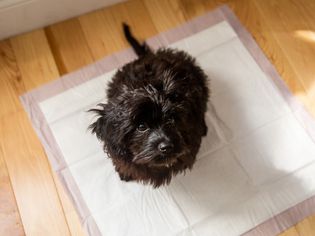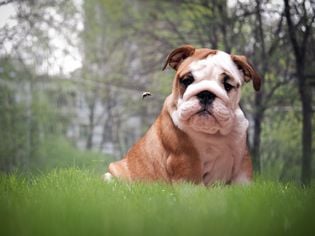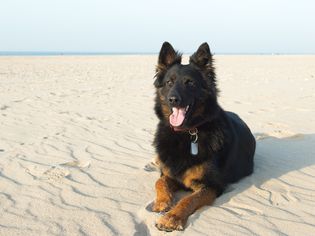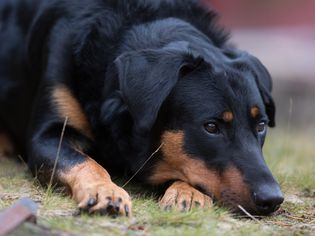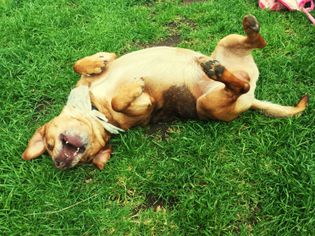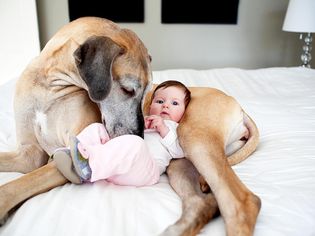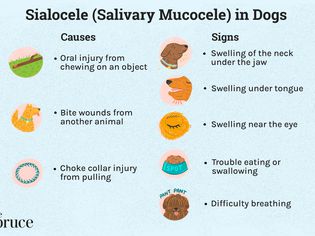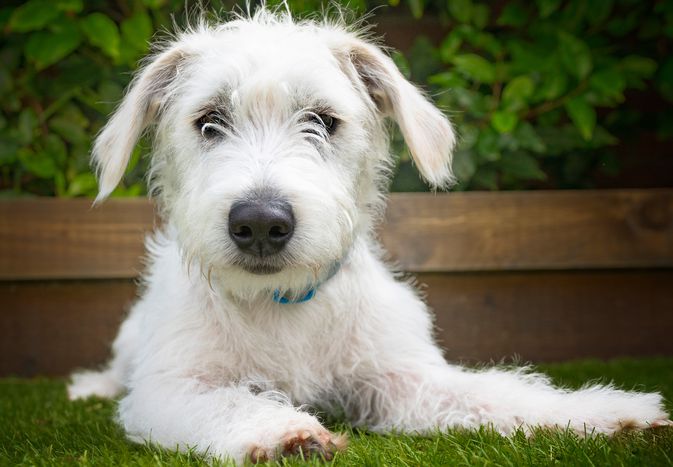The American bulldog is a large non-sporting breed from the United States with a sturdy body, broad head, muscular shoulders, and a longer face than other popular types of bulldogs. They are descendants of the English bulldog. This stocky, strong dog is also an affectionate and protective pet, and their love of children makes them a great choice for families. Despite their large size, the American bulldog often thinks they belong in your lap.
These dogs have powerful jaws and box-like heads, but even with their hearty looks, they're quite agile and light on their feet. With an American bulldog as a pet, you can expect ultimate loyalty, strength, and friendliness. They are happy, faithful companions who are always ready for work or playtime.
Learn all about the American bulldog, including their history, temperament, care needs, and more.
Breed Overview
Group: Foundation Stock Service
Height: 22 to 25 inches (males); 20 to 23 inches (females)
Weight: 75 to 100 pounds (males); 60 to 80 pounds (females)
Coat: Smooth, short coat
Coat Color: Typically white with patches of brindle, red, black, brown, or gray
Life Span: 10 to 12 years
Temperament: Friendly, loyal, playful, protective, confident
Hypoallergenic: No
Origin: United States
Characteristics of the American Bulldog
The American bulldog does best with experienced pet parents who have time to train and exercise their dogs often. These dogs have a clown-like personality. As family dogs, they do well with kids and babies.
Regular exercise is important for these strong dogs to beat boredom, which can manifest as bad behavior at home. American bulldogs love brisk walks, and their enthusiastic personalities are great for playing with adults and kids alike.
| Affection Level | High |
| Friendliness | High |
| Kid-Friendly | High |
| Pet-Friendly | Medium |
| Exercise Needs | High |
| Playfulness | High |
| Energy Level | Medium |
| Trainability | Medium |
| Intelligence | Medium |
| Tendency to Bark | Medium |
| Amount of Shedding | Low |
History of the American Bulldog
English bulldogs were originally used for bull baiting in 17th century England, a gruesome sport involving dogs fighting bulls. The practice has since been eliminated, and bulldogs dazzled their way into the lives of families across England (even becoming a national symbol).
English bulldogs were brought to North America to use their strength and determination as farm dogs. Farmers bred them with other working dogs to get the best all-around breed for their specific jobs. Their intelligence, loyalty, and agility made them helpful for both herding and hunting.
According to the AKC, the American bulldog breed's population was severely depleted during WWI and WWII. Thanks to two determined breeders, John D. Johnson and Alan Scott, these dogs were repopulated and went on to become the popular companions they are today.
As the breed developed, American bulldogs were known as friendly pets that were a must for families across North America. Their intimidating looks and strength made them a great breed to represent competitive sports teams.
The United Kennel Club recognized the American bulldog as a distinct breed in 1999, and the breed joined the AKC's Foundation Stock Service in 2019.
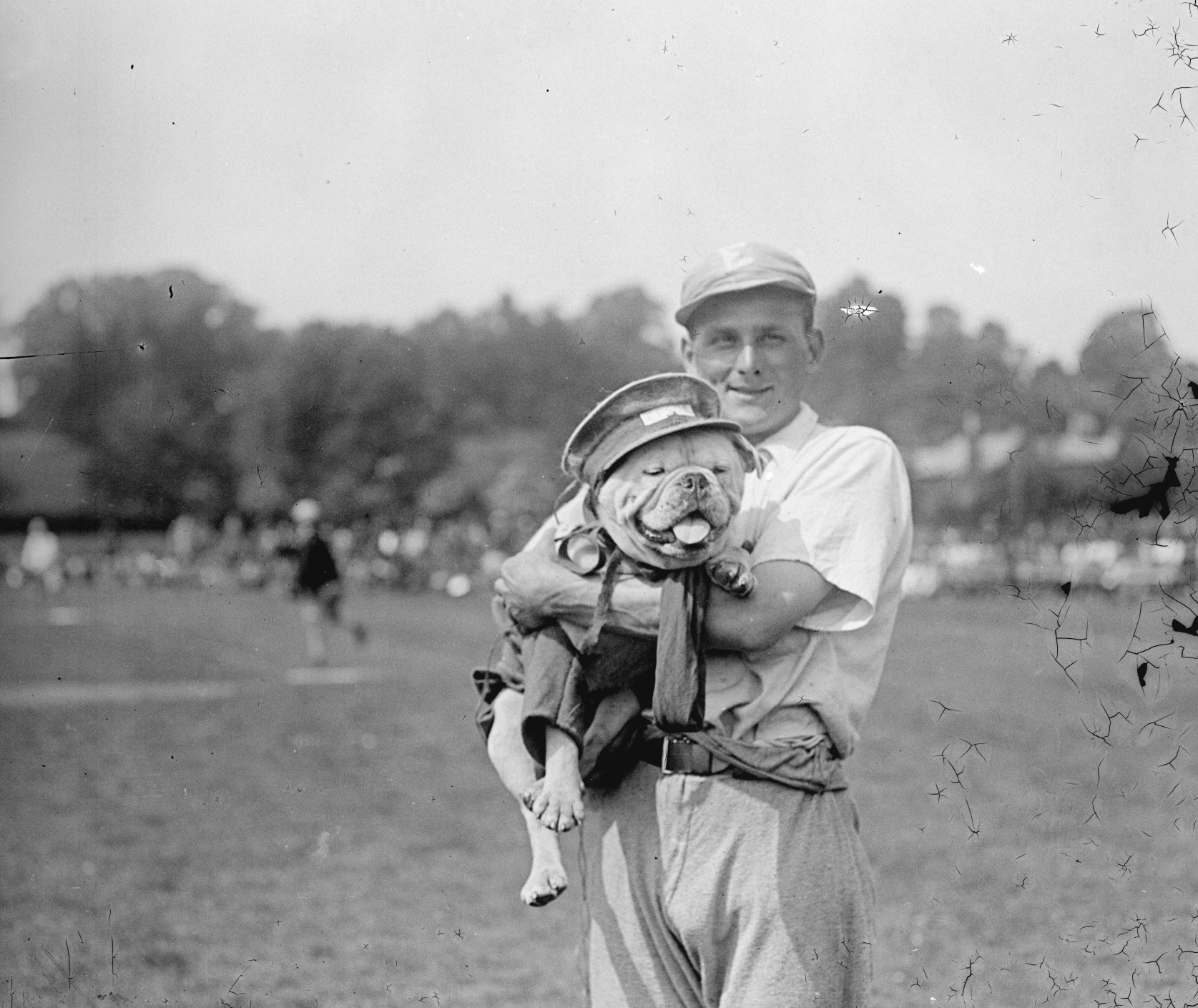
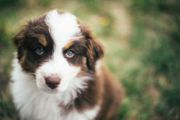
American Bulldog Care
The American bulldog makes a wonderful family pet, but this breed also requires significant exercise and training to be a healthy, well-mannered companion. In the grooming department, these short-haired dogs don't require much aside from basic care.
Exercise
American bulldogs do best with at least an hour of exercise per day, which you can provide through daily walks or playing in the yard. Along with helping your dog maintain health and a suitable weight, exercise is a great way to keep this breed mentally stimulated.
Without enough exercise, American bulldogs are prone to find their own entertainment—which can lead to destructive behaviors like chewing on furniture or getting into off-limits items at home.
This breed is best suited for active families that enjoy plenty of playtime with their dogs. Your American bulldog will be happy to join you on walks, hikes, and games like fetch or tug-of-war. Just keep in mind that they aren’t fast walkers.
Grooming
Minimal grooming is required for the American bulldog’s short, fine coat, but this breed does shed year-round. These dogs typically enjoy grooming, and weekly brushing will significantly help you manage shedding.
Though their coat is relatively low-maintenance, American bulldogs are known to have issues with excess drool. Their slobber is natural; just be sure to keep any wrinkles free from excess moisture to avoid bacteria buildup or infections.
Like other dogs, American bulldogs require regular baths, nail trimming, and ear cleaning. Their nails should be trimmed every few weeks to avoid overgrowth and pain, while their ears should be cleaned as needed to prevent ear infections.
Training
Consistent training is a must for this breed. American bulldogs are naturally protective (sometimes to a fault), but they do love to learn. Training your dog in basic obedience can begin as early as 6 to 8 weeks of age, and socialization is necessary once puppies have received the required vaccines to be safe in public.
American bulldogs can need a helping hand when it comes to acceptable behavior around strangers and other animals. This will help your dog become a friendly companion and avoid unnecessary aggression.
Since these dogs do best with love and attention from their family, they also respond very well to positive reinforcement methods. Although they can be stubborn, they’re intelligent and do well with patience when learning. Offer treats, affection, and playtime as rewards for desired behavior. Training should be consistent and ongoing throughout the dog's life.
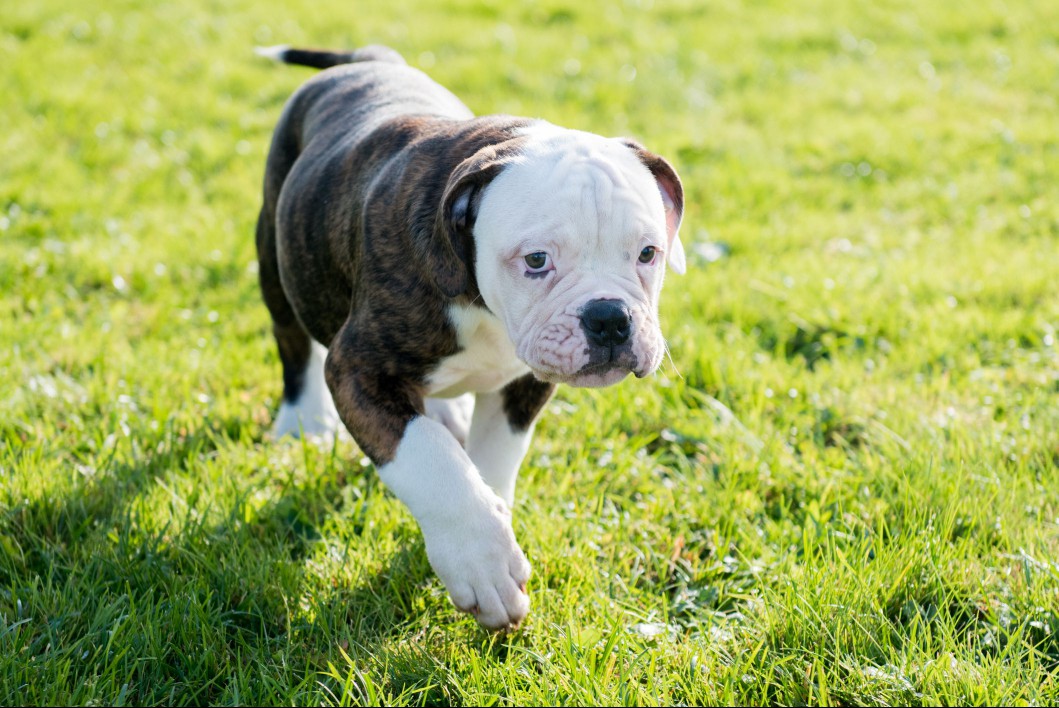
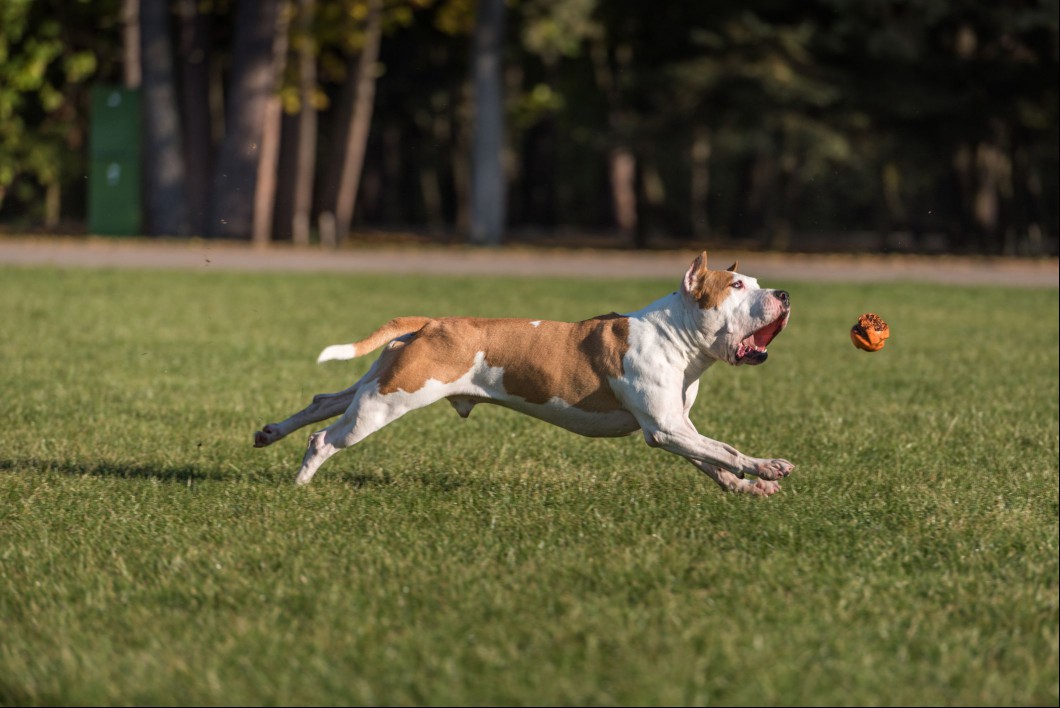
Common Health Problems
American bulldogs live an average of 10 to 12 years. Like other purebred dogs, American bulldogs can be prone to certain genetic health concerns. Responsible breeders will test prospective parent dogs before breeding to avoid passing these problems down to puppies.
The following are conditions to be aware of with this breed:
- Elbow and hip dysplasia: Common in large dog breeds, dysplasia is caused by a malformation in the dog's joints as they age.
- Neuronal ceroid lipofuscinosis: This hereditary disorder affects your dog's central nervous system. Genetic tests can determine whether this disease is present in specific bloodlines.
- Allergies: American bulldogs can develop allergies caused by an overactive immune system. While many puppies grow out of it, these symptoms are manageable in older dogs. Your veterinarian may recommend a food allergy test if symptoms like redness, itchy skin, or licking paws are present.
- Cherry eye: This is a red or pink growth in the corner of a dog’s eye that is caused by a prolapsed third eyelid. It can be cured with surgery.
- Cranial cruciate ligament (CCL) ligament issues: The CCL is a ligament in the knee. When damaged, such as from aging, a dog’s mobility will be affected.
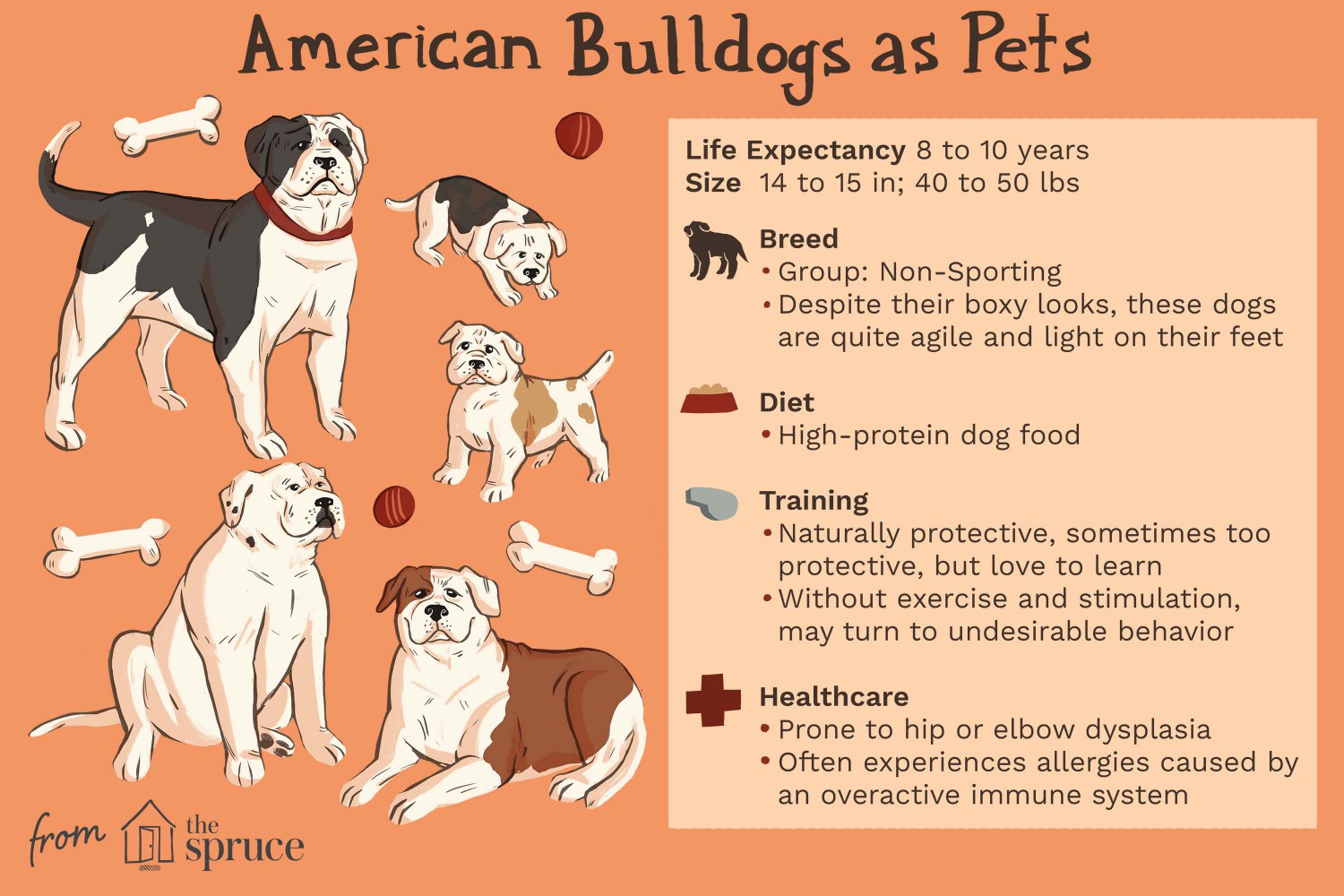
Illustration: The Spruce / Emilie Dunphy
Diet and Nutrition
American bulldogs do best on high-quality dog food with meat protein listed as the first ingredient. Avoid overfeeding to prevent unnecessary weight gain, which can cause joint issues. Your veterinarian may also recommend omega-3 fatty acids for joint health.
Along with maintaining the proper nutrients, it's important to be aware of any food allergies your dog may have if they struggle with red, itchy skin. Talk to your veterinarian to determine a suitable diet and portion sizes for your dog based on their age, weight, activity level, and specific medical needs. Allergy tests provide the most definitive results, but you can also slowly switch between different protein options to find the best results.
Where to Adopt or Buy an American Bulldog
American bulldogs are a popular breed in many regions of the United States, so finding this breed shouldn't be a major challenge for prospective adopters. Check your local shelters to meet American bulldogs in need of forever homes in your area, or reach out to breed-specific rescues to meet a variety of dogs.
If you're set on starting with a puppy, it's essential to research responsible breeders before adopting. Always ask for a health guarantee and the litter's family medical history. The right breeder should also allow you to meet the litter's parents and see the conditions in which their dogs are kept. American bulldog puppies from breeders may cost around $1,500 or more.
To start your search, check out these resources for breed-specific rescues, the national breed club, and the AKC:
- American Bulldog Rescue
- American Bulldog Association
- AKC American Bulldog Breeders
American Bulldog Overview
American bulldogs make great pets for individuals and families. They are loyal and protective, and they don’t display aggression towards the ones they love. They also aren’t high-maintenance when it comes to grooming their coat, but they do drool.
Pros of American Bulldogs
- Friendly, loving companions for kids and adults alike
- Great for active owners
- Low-maintenance coat
Cons of American Bulldogs
- Prone to drooling
- May require a specialized diet
- Needs plenty of exercise and socialization to be well-mannered

More Dog Breeds and Further Research
If you love the American bulldog, you might also like these similar breeds:
- English Bulldog
- American Pit Bull Terrier
- Boxer
There are plenty of different dog breeds that can join your family. With a little research, you can find the perfect match to bring home!
- Is an American bulldog a pit bull?
While the two breeds may look alike in many ways, the American bulldog is not the same as an American pit bull terrier (APBT). American bulldogs are much larger, and the APBT can have more varieties in coat color. Both breeds have a similar temperament, exercise needs, and socialization requirements to become well-mannered pets.
Is an American bulldog a good family dog?If their family provides the proper training and socialization, American bulldogs can become great family pets. This breed needs plenty of exercise to stay healthy, but with the right care, American bulldogs are known for being especially loving and protective of their families.
Do American bulldogs bark a lot?American bulldogs aren't as prone to barking as some dogs that were bred to alert, but they can still become vocal. Thankfully, there are plenty of ways to train your dog that discourage excessive barking.

